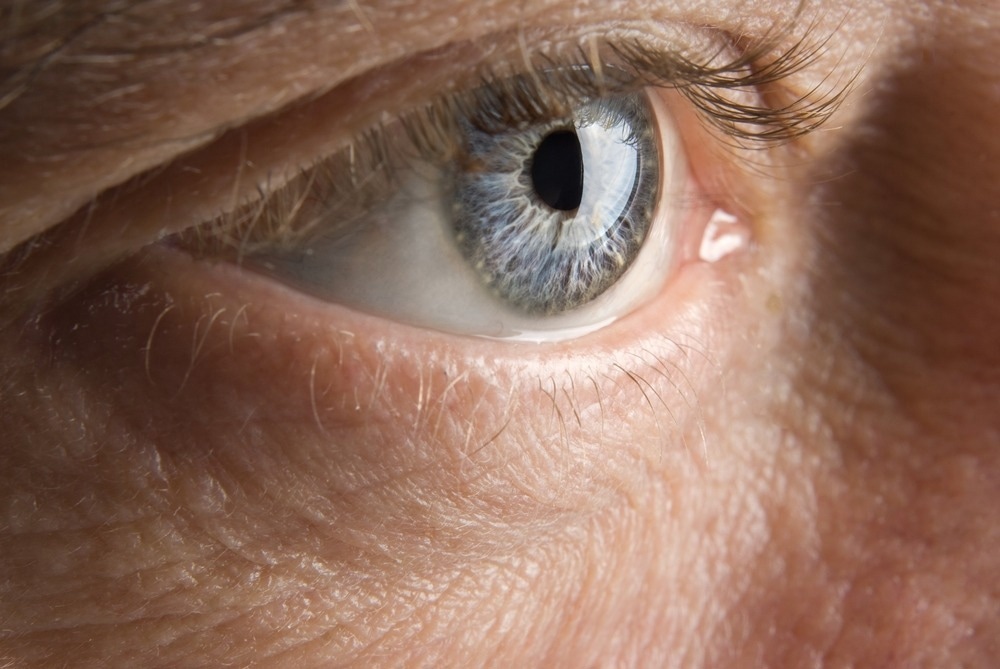In an article recently published in the journal Talanta, researchers demonstrated a new approach to enable the specific detection of biomarkers in human tear by employing an aptamer-based graphene affinity nanosensor.

Study: Towards detection of biomarkers in the eye using an aptamer-based graphene affinity nanobiosensor. Image Credit: Wallenrock/Shutterstock.com
The ability to detect and measure the biomarkers in undiluted physiological fluids allows the application of nanosensors in measuring the biological fluid samples whose dilutions are impractical.
Biomarkers for Tear Fluid
Tear fluid is receiving growing attention as biosensors with disease biomarkers, including metabolites, electrolytes, proteins, and enzymes, that provide information on the state of human health. Recently, affinity-based biosensors were developed to detect disease biomarkers. The affinity ligands in the biosensors may be aptamers or antibodies that recognize the target molecules.
Due to the salient features of aptamers and graphene, the aptamer-based affinity nanosensors realized on graphene field-effect transistors (GFETs) have received considerable attention. They allow the sensitive detection of a wide range of analytes from ions to proteins in clinical diagnostics. Graphene nanosensors have small footprints and are ideal detectors of biomarkers in tears.
Aptamer-based Graphene Affinity Nanobiosensor
In the present study, the researchers demonstrated a new approach for detecting and measuring the biomarkers in undiluted human tears by employing an aptamer-based graphene affinity nanosensor. The graphene conducting channel in GFET was protected with a polyethylene glycol (PEG) nanolayer whose selected thickness suppressed the adsorption of nonspecific molecules.
Modifying graphene with PEG of varying molecular weights restricted the nonspecific binding, enabling specificity and selectivity in biomarker detection in undiluted physiological fluids. The experimental results revealed that the fabricated nanosensor’s had the capacity to detect tumor necrosis factor alpha (TNF-α), an inflammatory cytokine, at a detection limit of 0.34 picomolar.
Research Findings
The researchers initially performed measurements of the biomarker in phosphate buffer solution (PBS) by employing nanosensors devoid of PEG modifications. Here, TNF-α was used as a representative tear-borne marker, and a transfer characteristic curve was measured by exposing the nanosensor to TNF-α in PBS. With increasing TNF-α concentration from 0.008 to 125 nanomoles, the Dirac point VDirac decreased from 27 to 2 millivolts.
The biomarker (TNF-α) bound guanine-rich aptamer experienced conformational changes and transformed into a compact and stable G-quadruplex via folding. Consequently, the protein-bound negatively charged aptamer approached the graphene surface, resulting in the redistribution of carrier concentration, which increased the drain-source current with an increase in TNF-α concentration.
PEG-modified nanosensors and aptamer were tested in PBS for biomarker measurements. The results revealed that with the increase in TNF-α concentration from 0.008 to 125 nanomoles, the VDirac (Dirac point) decreased from 39 to 9 millivolts with nanosensors modified with PEG of 350-dalton molecular weight, indicating that the binding of aptamer and TNF-α introduced the n-type doping to the graphene.
Similarly, in nanosensors modified with PEG of 1000 and 2000 dalton molecular weight, with the increase in TNF-α concentration from 0.008 to 125 nanomoles, the VDirac (Dirac point) decreased from 55 to 27 millivolts and 30 to 1 millivolt, respectively.
The normalized Dirac point (ΔVDirac/ΔVDirac, max) was used as the representative for sensor output, which was calculated for both PEG-modified and non-PEG-modified devices, and was further plotted as a function of TNF-α concentration. With the increase in TNF-α concentration, a larger concentration of aptamer/ TNF-α complexes was observed, reflecting an increase in sensor output.
Fitting the Hill-Langmuir binding equation allowed the determination of equilibrium dissociation constant KD value of 3.22 nanomoles for non-PEG-modified nanosensors. On the other hand, the KD was found to be 2.17, 2.89, and 2.86 nanomoles for the devices with PEG of molecular weight 350, 1000, and 2000 Daltons, respectively.
The aforementioned KD values suggested that the presence of superficial PEG had no effect on the affinity between TNF-α and aptamer. However, at any given TNF-α concentration, PEG-modified devices had larger output than the non-PEG-modified devices, suggesting that PEG modification increased the Debye screening length on the surface of graphene.
Conclusion
In conclusion, the researchers demonstrated a facile approach to enable specific and sensitive TNF-α detection in undiluted tears in the eye by employing an aptamer-based graphene nanosensor.
The nanosensor was configured as GFET, and its graphene surface was modified with aptamer and PEG. The aptamer was specific in recognizing TNF-α, which induced a carrier change in graphene concentration. Measuring the carrier change determined the concentration of TNF-α.
The PEG nano layer reduced nonspecific adsorption, thereby increasing its specificity, which further depends on the molecular weight of PEG.
Thus, optimizing the PEG molecular weight and attachment method could allow sensitive and specific detection of other biomarkers in undiluted physiological fluids required in healthcare applications.
Reference
Wang, Z., Dai, W., Yu, S., Hao, Z., Pei, R., De Moraes, C., Suh, L., Zhao, X. and Lin, Q., (2022). Towards detection of biomarkers in the eye using an aptamer-based graphene affinity nanobiosensor. Talanta, 250, p.123697. https://www.sciencedirect.com/science/article/pii/S0039914022004933?via%3Dihub
Disclaimer: The views expressed here are those of the author expressed in their private capacity and do not necessarily represent the views of AZoM.com Limited T/A AZoNetwork the owner and operator of this website. This disclaimer forms part of the Terms and conditions of use of this website.